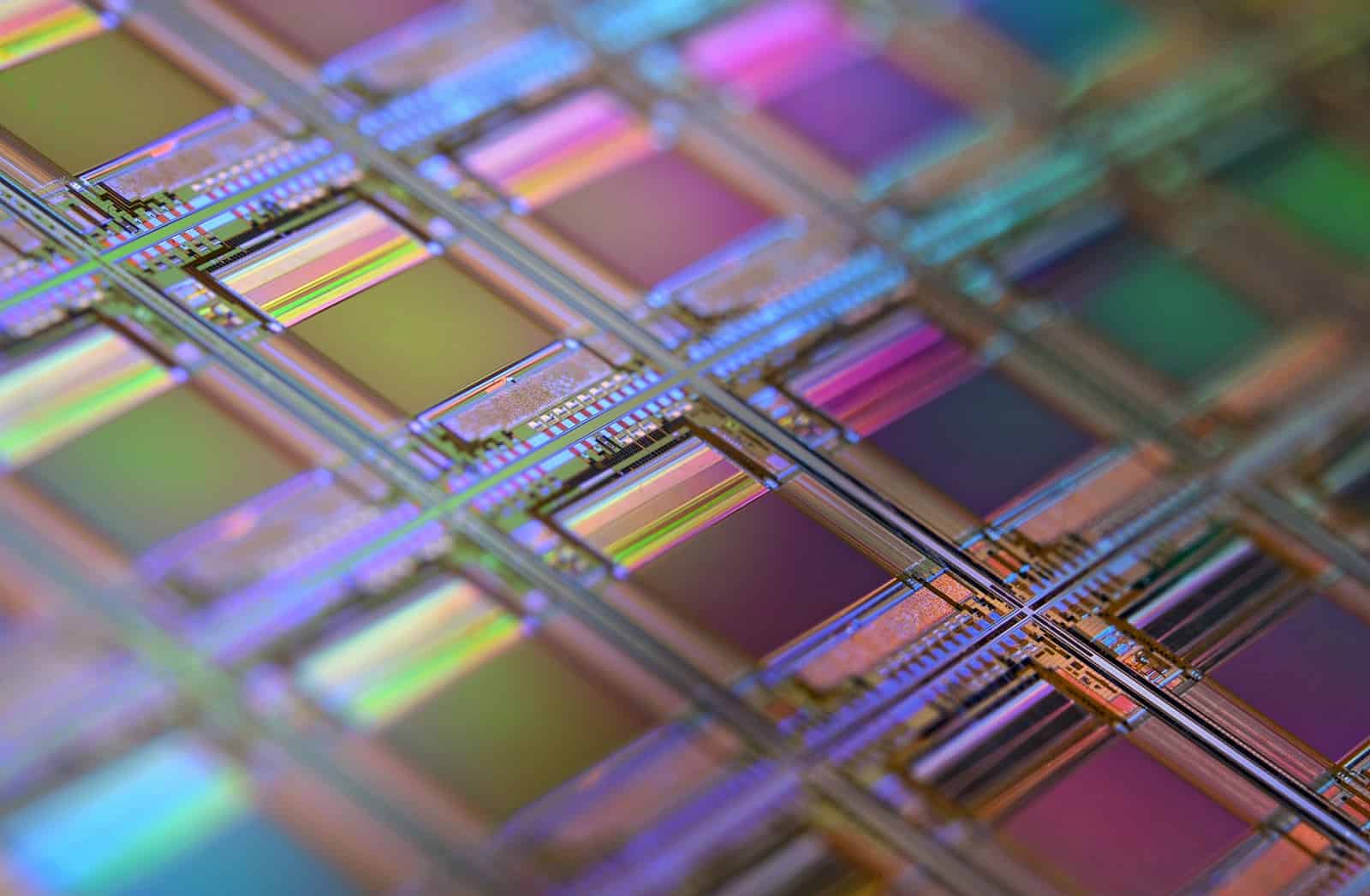Apple is getting ready to launch the iPhone 18 with a major change under the hood. Its new A20 chip, built using the advanced 2nm process, promises faster speeds and better power use. Experts expect this upgrade will make the iPhone 18 cost noticeably more than earlier models.
Customers interested in Apple’s latest technology should be ready for a higher price tag. The upgraded chip is more expensive to make and could raise the cost of the phone much more than past increases. For more about the new chip and reasons behind the price hike, check the report on the iPhone 18’s 2nm process and expected cost.
Why the Move to 2nm Matters More Than Ever

Apple’s decision to move to TSMC’s 2nm chip process for the iPhone 18 Pro series isn’t just a technical upgrade — it’s a financial game-changer. While this new process promises better power efficiency and faster performance, it also introduces a significant cost spike in Apple’s supply chain.
According to industry reports, the price Apple pays per wafer from TSMC is expected to rise by 25–30% compared to the current 3nm nodes used in the iPhone 15 Pro and 16 Pro models. These costs inevitably ripple downstream — affecting retail pricing, component procurement, and even Apple’s profit margins.
Here’s a quick snapshot:
| Chip Node | Estimated Cost Per Wafer | Used In |
|---|---|---|
| 5nm | ~$16,000 | iPhone 13, iPhone 14 |
| 3nm | ~$20,000 | iPhone 15 Pro, iPhone 16 Pro |
| 2nm | $25,000+ | iPhone 18 Pro (expected) |
What 2nm Brings to the Table
Shrinking the chip architecture from 3nm to 2nm isn’t just marketing — it means:
- More transistors packed into the same die area, improving computational power.
- Better power efficiency, translating to improved battery life.
- Lower heat output, which helps with sustained performance and thermals.
Apple has reportedly secured the first wave of TSMC’s 2nm production capacity, giving it a temporary advantage over rivals. But that advantage comes with a price tag — one that’s likely to be passed on to consumers.
iPhone 18 Pricing: What To Expect
Apple hasn’t confirmed any pricing yet, but here’s what analysts are projecting based on previous trends and component cost changes:
| Model | iPhone 17 Price (Est.) | iPhone 18 Expected Price | Change |
|---|---|---|---|
| iPhone 18 | $799 | $799–$849 | Flat or Slight Increase |
| iPhone 18 Plus | $899 | $899–$949 | Flat or Slight Increase |
| iPhone 18 Pro | $999 | $1,099+ | +$100+ |
| iPhone 18 Pro Max | $1,199 | $1,299+ | +$100+ |
The standard and Plus models may avoid major price changes if Apple continues using a 3nm-based A18 chip. But the Pro models, which are expected to get the new 2nm A18 Pro, could see noticeable increases.
It’s Not Just Chips: What Else Is Driving Up Costs?
While the 2nm shift is the headline reason for rising costs, it’s not the only one. Other contributing factors include:
- U.S.-China tariffs adding costs to parts and assembly
- Increased memory prices, especially for LPDDR5X RAM
- Advanced materials, such as new camera lenses or titanium frames
- R&D spending, including Apple’s rumored push into AI-enhanced features
Apple has also been investing heavily in next-gen features like periscope zoom, under-display Face ID, and improved cooling systems — all of which could debut on the iPhone 18 Pro models.
What This Means for Competitors
Apple isn’t alone in this. Qualcomm, MediaTek, and other chip designers are all facing the same price pressure from TSMC. However, Apple’s scale allows it to absorb more of the blow — or to package the extra cost into a higher-end experience and justify the price hike.
By the time Android flagships begin adopting 2nm chips (expected in mid-to-late 2025), Apple will likely have already launched and established its next-gen devices, giving it a timing advantage as well.
Will Consumers Bite?
The real question is how much value consumers will see in this upgrade. Apple may pair the 2nm chip with new AI-powered iOS 19 features, better battery life, and exclusive camera tools to justify the added price. And given how well the iPhone Pro models have sold in recent years, there’s reason to believe buyers may still line up — even if the starting price creeps upward again.
Key Takeaways
- Apple will use a new 2nm chip in the iPhone 18.
- The upgraded chip may cause a bigger price jump than usual.
- Shoppers should get ready for a higher price on the next iPhone.
Apple’s 2nm Chip Leap and Its Impact on iPhone 18
Apple’s move to the advanced 2nm chip is set to change both the performance and the price of the iPhone 18. The manufacturing cost will affect pricing, while power efficiency and speed will see a boost.
Advantages of the 2nm Process
The 2nm manufacturing process allows Apple to fit more transistors into the same space, making chips that are both faster and more energy efficient. This design shrinks the distance between each transistor, so the chip uses less power during daily tasks.
Battery life improves without making phones thicker or heavier. The chip can handle more demanding apps yet run cooler than older versions. This efficiency matters not just for heavy users but also for people who want their iPhone to last through a busy day at work or school.
These manufacturing gains don’t come cheap. Reports suggest the high cost of 2nm chips will push iPhone 18 prices higher than earlier models. Still, for pro models and users who want leading tech, the leap should feel worth it.
Performance Enhancements Over Previous Generations
A jump to 2nm chips will deliver a boost in both raw speed and efficiency. Early leaks suggest users can expect a 10-15% increase in computing speed, compared to chips inside the iPhone 17 and iPhone 16.
Multitasking gets smoother. Photos and videos process faster. Apps launch quicker. Gamers may notice better graphics, with less lag or heat during intense sessions. The chip will also help with AI features like voice recognition and real-time photo editing.
Power users, especially those buying the Pro Series, should see lower battery drain during demanding tasks. Features exclusive to the Apple A18 may become available—making basic and advanced tasks less taxing on the phone.
Comparing 2nm to 3nm and A16 Bionic Chips
With each chip release, Apple narrows the gap between function and efficiency. See below for a comparison of key features:
| Feature | 2nm (A18) | 3nm (iPhone 15/16) | A16 Bionic (iPhone 14 Pro) |
|---|---|---|---|
| Node Size | 2 nm | 3 nm | 4 nm |
| Speed Improvement | +10-15% | Baseline | -10% vs. 3nm |
| Power Efficiency | +20-30% | Baseline | -15% vs. 3nm |
| Device Lineup | iPhone 18, Pro | iPhone 15/16/17 | iPhone 14 Pro |
Users upgrading from the iPhone 15 or iPhone 16 to the iPhone 18 will notice snappier responses, less time waiting on intensive apps, and longer battery life.
The jump from A16 Bionic to the 2nm chip is bigger than most past upgrades. Efficiency gains help limit overheating, and allow the phone to run heavy apps at lower power.
Role of TSMC in Apple’s Chip Manufacturing
TSMC, short for Taiwan Semiconductor Manufacturing Company, produces all of Apple’s custom chips. Its role is vital in making the move to 2nm possible.
Only TSMC has the technology to mass-produce these chips in time for the iPhone 18 launch. The company’s lead in advanced chip building is why Apple stays ahead of most smartphone rivals.
However, the process for 2nm chips requires new factories and more complex machines. This raises manufacturing costs for each chip Apple buys. As a result, the increased expense gets shared with consumers.
TSMC’s partnership with Apple also means iPhones—especially the Pro Series—set the standard for performance and efficiency in the smartphone world. TSMC’s ability to deliver millions of chips on schedule will shape the success of the iPhone 18.
Why the iPhone 18 May Be Significantly More Expensive
Apple’s new iPhone 18 could cost much more than earlier models because of its advanced processor, premium upgrades, and the changing smartphone market. These facts play an important role in shaping how much customers might have to pay.
Increased Production Costs and Pricing Strategies
The iPhone 18 will feature a new 2nm processor. This chip gives better speed and battery efficiency, but it’s also very expensive to make. Manufacturing the 2nm chip requires new processes that are more costly than older versions used in the iPhone 14 or iPhone 15 Pro.
Chip makers like TSMC must use advanced methods, which increases the cost to Apple. Reports show that low production yields—meaning fewer working chips per batch—also drive up prices. For Apple to keep profits steady, it will likely pass these new costs on to buyers. If the price goes up, Apple may keep lower prices for older models like the iPhone 14 Plus or iPhone 15 Ultra to reach more budgets. Processor cost could drive prices of the iPhone 18 range up.
Premium Features, Design Changes, and Component Upgrades
Alongside a new processor, the iPhone 18 might see upgrades to displays, cameras, and ports. For example, it may have a brighter Super Retina XDR OLED screen and improve peak brightness for clearer viewing outdoors. Apple is expected to use USB-C across all models due to rules in some countries, making older cables and chargers less useful.
Camera changes could include a stronger ultrawide lens and 5x optical zoom for better photos, especially in portrait mode. Features like Dynamic Island, wireless charging, and the Action Button may all get improvements too. Apple’s new hardware often means higher prices, as seen with the jump from the iPhone 14 Pro to the iPhone 15 Pro.
Impact on the Smartphone Market and Competitors
This price jump can change the whole smartphone market. Other top smartphone brands like Xiaomi may keep their prices lower or include similar features to compete with Apple’s iPhone. A higher cost for the iPhone 18 can push budget-focused buyers toward older iPhones, like the iPhone 15 or iPhone 16 Pro, or Android phones with similar features.
Apps and features updated for iOS 18 will also push up demand for new devices, despite the higher price. Apple’s move could lead stores to adjust marketing or offer more trade-in deals to attract customers. iPhone 18 Prices May Rise Due to 2nm Processor Costs.
Frequently Asked Questions
Apple’s move to 2nm chip technology in the iPhone 18 will bring changes to cost, performance, and how the phone is made. These new chips could lead to different impacts for both buyers and the environment.
What are the cost implications of Apple’s transition to 2nm chip technology?
The switch to 2nm chips will increase iPhone 18 production costs. Reports suggest Apple may pass these costs to buyers, which could make the iPhone 18 more expensive than older models. Most of this cost comes from using advanced manufacturing methods and newer equipment, which are pricier than before. For more information, check iPhone 18’s Costly 2nm Process.
How does the move to a 2nm chip architecture improve iPhone performance?
Chips built at 2nm use less space and can fit more transistors. This allows for faster data processing and stronger graphics. With less distance for electrical signals to travel, the phone can respond faster and handle more tasks at once, making apps and games run more smoothly.
What potential challenges could Apple face in mass-producing 2nm chips?
As chips get smaller, they become harder to make. Tiny imperfections during production can cause more failures, reducing how many usable chips come from each batch. Apple may run into problems like limited supply, longer wait times, and increased costs due to wastage and the complexity of 2nm chip manufacturing.
Can consumers expect improved battery life with the 2nm chips in the iPhone 18?
Yes, newer 2nm chips use less electricity compared to previous chip generations. Lower power usage means the phone battery can last longer, even when apps or games put it under heavy use. People can expect the iPhone 18 to run more efficiently, so time between charges could improve for many users.
How might the shift to more expensive chip technology affect Apple’s market strategy?
Apple may focus more on premium pricing and market its latest iPhones as top-tier products. Costlier chips could mean higher prices, so Apple might offer more features or stronger value statements to justify the increase. The company may also adjust its product mix, focusing sales on higher-end models. For more details, see Processor cost could drive prices of the iPhone 18 range up.
What are the environmental impacts of producing the new 2nm chips?
Manufacturing smaller chips often requires new tools and chemicals, which may increase the energy needed during production. While the chips themselves use less electricity in the device, creating them could lead to more carbon emissions unless factories use cleaner power sources. The overall environmental effect depends on how chipmakers manage waste and energy during production.







